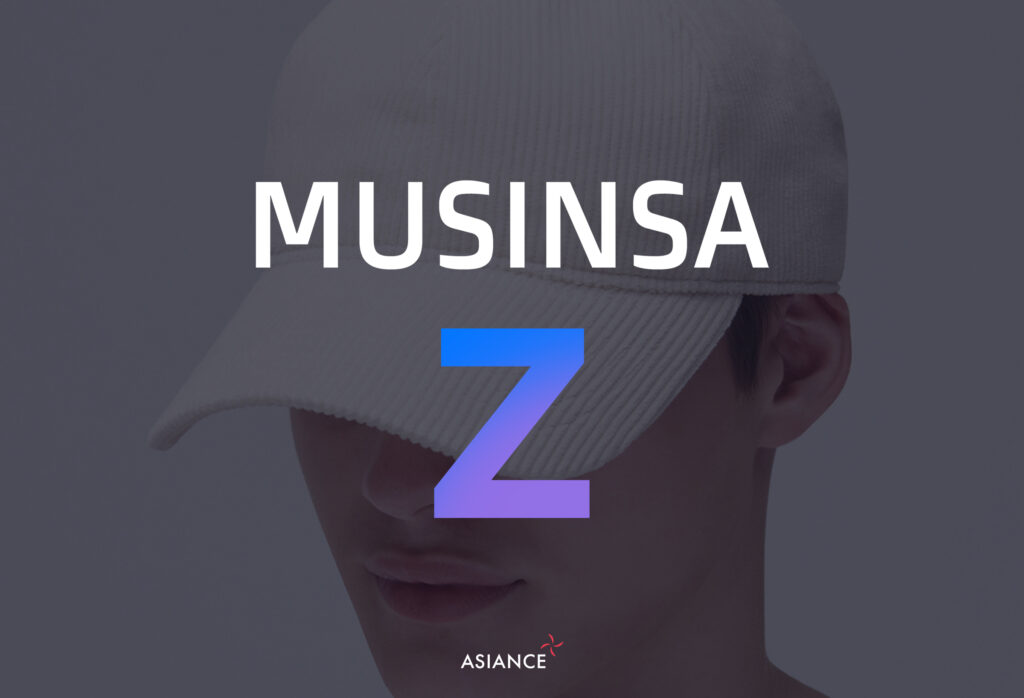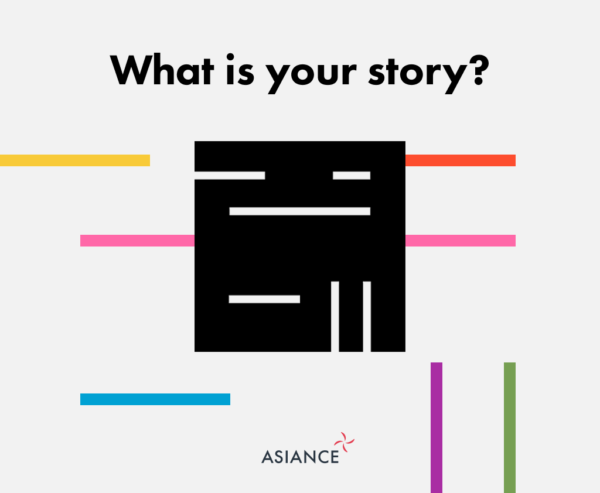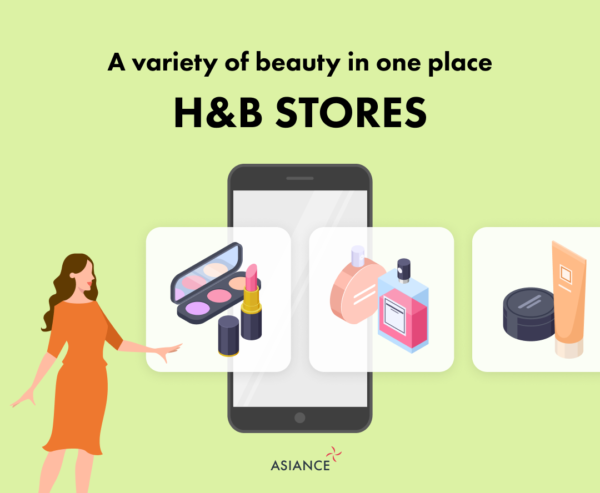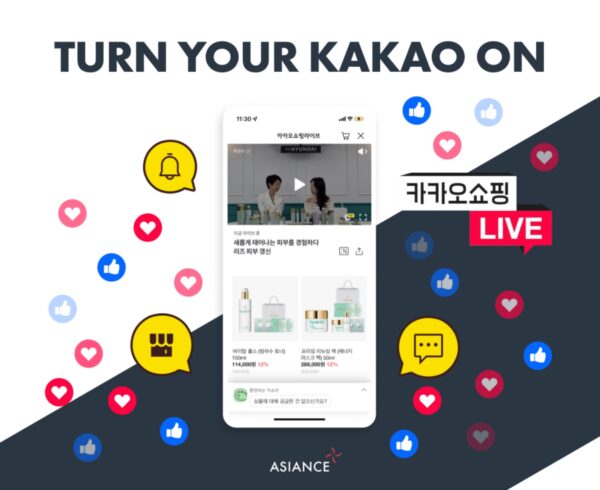Fashion vertical platform – Male customers among MZ generation
Based on the last blog post, Korea’s online shopping rate has increased since Covid-19. It’s safe to say that not only Generation Z, who are referred to as the mobile native generation, but also the majority of other generations are now adapted to online shopping, with the increase in online shopping rates ranging from 4-50s to 60s who are relatively unfamiliar with the online experience. One of the interesting things is that there are differences in the type of platforms customers prefer, depending on their age group. According to Nielsen Korean Click’s e-commerce report for the second quarter of this year, teenagers to 20s tend to prefer vertical malls, while those in their 30s to 40s prefer integrated malls. In particular, teenagers and twenties said they prefer fashion and beauty-specialized malls.
What is this ‘vertical’ platform? ‘Vertical’1 refers to a service platform that targets a particular customer base of interest, which means focusing a narrow and deep category. On the other hand, an integrated mall combines all categories of products, including open markets such as Coupang and Gmarket, home shopping malls and duty-free shops run by large companies. First of all, fashion vertical platforms are ranked in the order of Musinsa, W Concept, Style Share, and 29CM based on sales in 2019. There are various categories of vertical platforms in Korea, but the most popular platforms in recent years are fashion and food related. This year was especially notable for the growth of sales of fashion vertical malls. According to the Korean Fashion Association, Musinsa, which recorded 900 billion KRW in sales in 2019, followed by W Concept, which recorded 200 billion KRW. It is followed by StyleShare and 29CM. Today, we will focus on the latest growing male category among fashion vertical platforms, Musinsa, which has the highest transaction amount. In the case of Musinsa, a leading male fashion company, the company surpassed 450 billion KRW in 2018, doubled 900 billion KRW in 2019, and has a grand goal of reaching 1.5 trillion KRW this year.
Besides Musinsa’s characteristics, what are some of the reasons why a vertical platform, which specializes in only certain product lines, is so popular with relatively young consumers? According to Nielsen Korea, the market share of the vertical platform has grown from 14.6% in early 2018 to 28.9% at the end of 2019. This is because professional manufacturers and start-ups are linking online shopping to their products through content, hobby, and perspective-based social media, and their dependence on price comparison portals has decreased compared to the past when the lowest price was a key purchasing factor. The vertical platform focuses on one category, enabling professional and individual image building. In addition, the MZ generation values not only the brand image itself, but also the reliability of this platform or brand. Most of the users of the vertical platform are coming through keyword searches or communities related to that category, which can appeal to the MZ generation and, as a result, lead to product competitiveness and loyal customers. In fact, the vertical platforms have a higher number of engagement (likes, followers, etc.) on social media than integrated malls that sell all sorts of items to MZ generation which is heavily influenced by social media.
1 The Vertical platform is a format that provides one service (shopping, music, photography, education, etc.) or one function (search, social, commerce, etc.) to those interested in information and services in a particular field.

<What is Musinsa?>
Musinsa started in 2002 as a community called ‘Where there are a lot of photos of shoes’, and in the early days, the representative shared fashion information by posting shoes and street fashion photos at Dongdaemun. It has entered the e-commerce business since 2009 and has 5.5 million members and 3,500 brands as of 2019. In addition, Musinsa achieved the largest deal ever, recording 74.3 billion KRW in total, at a six-day Black Friday event from November 26th this year. What are the factors that allowed Musinsa to grow so steadily? The fact that Musinsa started out as a community that shares the latest fashion trends and provides a variety of content, including product information, must have been attractive to the MZ generation, which is sensitive to fashion trends and values information exploration.
Another reason for Musinsa’s success is that it focused on the MZ generation, especially the ‘male’ generation. In fact, the proportion of male and female members of Musinsa is about 55:45, which is a platform with a stronger male orientation. As of September 2019, 71% of the 5.5 million Musinsa members were in their teens and 20s and 54% of men among them. Musinsa’s marketing strategies aimed at men in their 10s and 20s, including the launch of a collaborative collection of the game ‘Battle Ground’ and clothing brand ‘Covernat’, and backpacks made with soju brand ‘Chamisul’, played a major role in the growth of Musinsa. And the fact that Musinsa represents street casual, which is popular with younger men, also explains the loyalty of MZ generation men to Musinsa.
<Musinsa’s strategy for male MZ customer base>
• Creating unique contents representing the image of the platform
• Leveraging media and influencer to demonstrate its content
• Persistence of content & Campaign strategy that links content to purchases
• Product creation beyond promotional content – Limited product collaboration with brand and influencer
• Services that maintained the origin of the fashion community – Street Snap, Cody Map
Musinsa is carrying out various strategies targeting male customers, and among them, the differentiation of ‘content’ is the most prominent. First, ‘Mushinsa TV’, a YouTube channel launched in April 2019 is one of the examples. Musinsa TV deals with the latest fashion trends, styling tips, brand and designer news, and among them, Korean male model Jung Hyuk’s category of ‘On Street’ is drawing attention, which introduces ‘Street Fashion,’ a style popular with the 10-20 male generation. In addition, the ‘Show Me the Closet’ category, which examines the closets of influencer and celebrities, focuses on content such as looking at the closets of local male rappers and models who are well-known to men and sharing fashion tips.
In addition, another strength of Musinsa is collaboration. MZ Generation pays attention to collaboration, in which various brands collaborate to plan their products, and Musinsa often collaborates with brands that appeal to the male generation. For example, in February of 2020, a collaboration collection with street casual brand ‘Mille’ and game creator ‘Kim Blue’ was sold out in one day. Kim Blue is a game creator with 1.77 million subscribers and is highly recognized by the 10-20 male generation. Furthermore, Musinsa is working together with various brands and planning Musinsa exclusive products. Musinsa also offers content called ‘Street Snap’ that pays attention to the 10-20 male generation who are enthusiastic about ‘Street Casual’ fashion. If you access the main page of Musinsa Store, you’ll see a category called ‘Style,’ where you can see snapshots of real-life male consumers styling with products purchased from Musinsa and taking them naturally in the street casual concept. Click on the snap and you’ll get a purchase link, and you’ll get some styling tips. Finally, Musinsa focuses on the fact that male consumers find it difficult to match or coordinate their outfits compared to female consumers. Therefore, Musinsa created categories called ‘Cody Shop’ and ‘Cody Map’ to show various styles of male models showing ‘hip’ street look styling. If consumers click this, it’s connected to the purchase link and allows consumers to leave comments, offering a variety of styling methods.
<Other vertical fashion platforms for male customers>
• Naver ‘MR.’ – Retaining high accessibility and powerful user data
• Hiphoper – Executing ‘Flex’ promotion with street looks
As Musinsa proved that men in the MZ generation are not only interested in fashion, but are also as sensitive to content and promotions similar to that of female customers, other platforms have begun to enter the men’s fashion vertical business. For example, in November of 2020, Naver opened a beta service for the men’s online fashion editing shop ‘Mr.’. Mr. has been established as a category in Naver Shopping, and there are 124 brands in total, ranging from sports brands such as Nike and New Balance to luxury brands such as Gucci and Prada. Mr. Purchaser points out that 3% of the purchase amount will be set aside as Naver Pay points, and that up to 7% will be added to Naver’s paid membership service ‘Naver Plus Membership’. Considering that about 90% of Koreans use Naver, and Naver Shopping itself is estimated to be second in terms of sales in 2019, following Coupang, the fact that it already has strong user data and has high accessibility alone makes it highly likely that it can become a rival to Musinsa. Not only Naver, but also the platform ‘Hiphoper’, which was launched in 2011, implemented a renewal to target the MZ generation in 2019, and is receiving a lot of support from men in their 10s and 20s. Currently, there are about 2,000 brands, and the main consumer group of Hiphoper is known to be in their early 20s and 30s, with 60% of men. Hiphoper, like Musinsa, have recently attracted customers with their marketing methods featuring ‘flex’, a feature of MZ generation consumption. For example, Hiphoper is regularly promoting ‘Flex Week’ in the third week of every month since September 2019. During the ‘Flex Week’, they are offering the most popular products at maximum discount and maximum quantity through ‘All day Flex’, ‘Black Flex Day’, and ‘Flexable’.
<Considerations>
• Origin, being trendy, individuality – Differentiated ‘value’ of the brand or its platform
• The importance of contents & stories, not just products
• Persistence of content & stories and linking content to services or products
• Influence of peer groups – Value to be certified through social media
So, what do you need to target the MZ generation in Korea, especially male consumers? Have you ever heard of the program ‘Goganji’? ‘High School Student Ganji Contest’ is a YouTube fashion survival program produced by media commerce company ‘Blank Corporation,’ where ordinary high school students compete for their own styling skills. Did you know that there are many Generation Z consumers who refer to the styling of ordinary students who are starred in this program and even make actual purchases based on their styles? The proportion of male consumers as well as female consumers who purchase clothes by referring to the Instagram of the cast of ‘Goganji’ is very high, which shows the characteristics of the MZ generation, which is ‘hip’ and values their own individuality. It’s also a reminder of how often and important YouTube is used by the MZ generation to understand trends. In addition, it is impressive that not only the popular celebrity but also the relatively familiar look of ‘ influencer’ is referred to through social media to create your own style. Generation Z, which is always connected to peer groups through social media, values their assessments most, constantly certifies their consumption, and is greatly influenced by other people’s proof shots. According to a survey conducted in March of 2020 by the 20th Institute of University Tomorrow, 41% of Generation Z said they prioritize ‘value to certify or show’ when purchasing. In order to target the male MZ generation, it is good to remember that the MZ generation is greatly influenced by peer groups and that they value ‘individuality’ and ‘trendy’ through social media. The unique content is also something that each brand should pay attention to. Creating video content based on the brand’s image using influencers, which are attracting attention from the male generation, is also important to display the ‘hip’ that the MZ male generation likes, the ‘street look’ styling and so on. In addition, collaboration with influencer or celebrities and brands, which is popular with male consumers, is also an eye-catching method. The scarcity of ‘000 Exclusive’ and ‘000 Limited Edition’ can appeal to consumers. When considering various marketing strategies to target the male MZ generation, the key points will depend on how the brand image will be presented.













